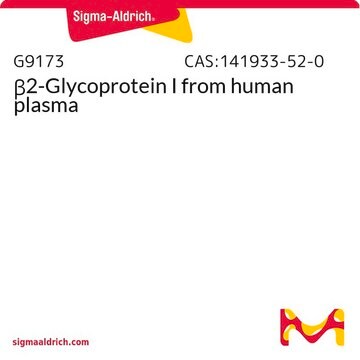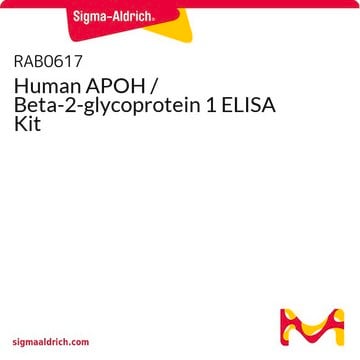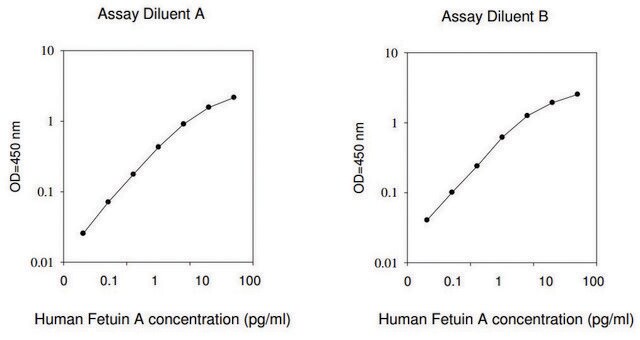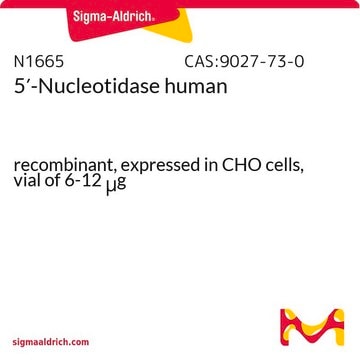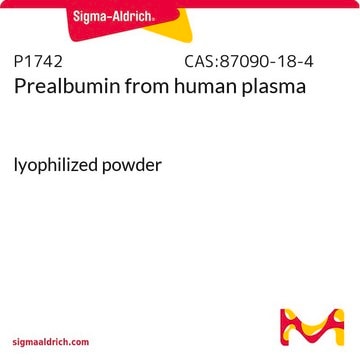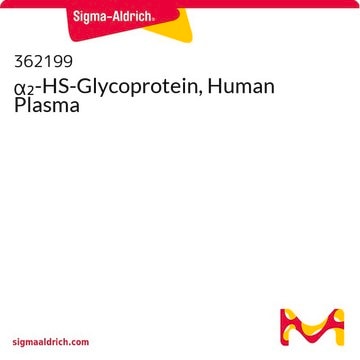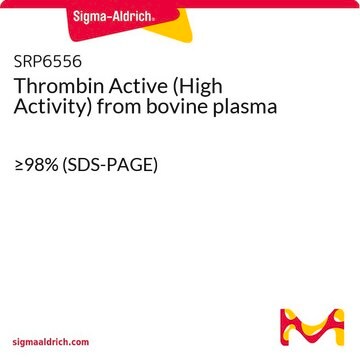362225
β₂-Glycoprotein 1, Human Plasma
Synonyme(s) :
Apolipoprotein H
Se connecterpour consulter vos tarifs contractuels et ceux de votre entreprise/organisme
About This Item
Code UNSPSC :
12352202
Nomenclature NACRES :
NA.25
Produits recommandés
Pureté
≥95% (SDS-PAGE)
Niveau de qualité
Forme
solid
Fabricant/nom de marque
Calbiochem®
Conditions de stockage
OK to freeze
Concentration
≥2 PEU/mg solid (antigen content)
Conditions d'expédition
ambient
Température de stockage
2-8°C
Catégories apparentées
Description générale
Native β2-glycoprotein 1 from human plasma. A carbohydrate-rich plasma protein that is a constituent of several lipoprotein particles. Possesses sialylated and galactosylated bi- and triantennary oligosaccharides.
Avertissement
Toxicity: Standard Handling (A)
Définition de l'unité
One PEU is defined as the amount of β₂-glycoprotein 1 present in 1 ml of normal plasma (~200 µg).
Forme physique
Lyophilized from 200 mM glycine, 150 mM NaCl, pH 7.5.
Notes préparatoires
Prepared from plasma that has been shown by certified tests to be negative for HBsAg and for antibodies to HIV and HCV.
Reconstitution
Following reconstitution, store in the refrigerator (4°C). Stock solutions are stable for 1 month at 4°C or for up to 4 h at 20°C.
Reconstitute with 1 ml of distilled H₂O.
Autres remarques
Wang, S.X., et al. 1999. Biochemistry 38, 9477.
Cassader, M., et al. 1994. Artherosclerosis 110, 45.
Walsh, M.T., et al. 1990. Biochem. 29, 6250.
Cassader, M., et al. 1994. Artherosclerosis 110, 45.
Walsh, M.T., et al. 1990. Biochem. 29, 6250.
Informations légales
CALBIOCHEM is a registered trademark of Merck KGaA, Darmstadt, Germany
Code de la classe de stockage
11 - Combustible Solids
Classe de danger pour l'eau (WGK)
WGK 1
Point d'éclair (°F)
Not applicable
Point d'éclair (°C)
Not applicable
Certificats d'analyse (COA)
Recherchez un Certificats d'analyse (COA) en saisissant le numéro de lot du produit. Les numéros de lot figurent sur l'étiquette du produit après les mots "Lot" ou "Batch".
Déjà en possession de ce produit ?
Retrouvez la documentation relative aux produits que vous avez récemment achetés dans la Bibliothèque de documents.
Xue Jing et al.
Oncology reports, 40(2), 1035-1045 (2018-06-20)
Chronic hepatitis B virus (HBV) infection remains one of the leading causes of hepatocellular carcinoma (HCC) globally. However, the mechanism underlying the mediation by HBV surface proteins (HBsAgs) of the early steps in the virus life cycle and following HCC development
Notre équipe de scientifiques dispose d'une expérience dans tous les secteurs de la recherche, notamment en sciences de la vie, science des matériaux, synthèse chimique, chromatographie, analyse et dans de nombreux autres domaines..
Contacter notre Service technique